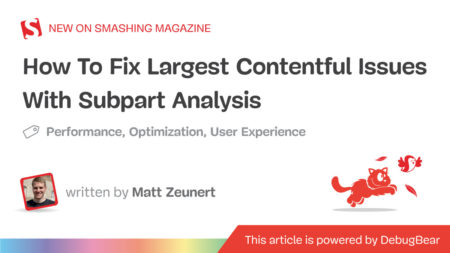According to a recent survey, 40% of software engineering managers anticipate that AI will drastically change the skills needed to be a successful software engineer within the next three years. Unsurprisingly, the widespread adoption of AI code assistants and other Generative AI (GenAI) tools is transforming how organizations develop technical talent and how new software engineers learn their craft.
The challenge lies not just in learning to code — it’s in learning to code effectively in an AI-augmented environment. Software engineering teams becoming truly proficient with AI tools requires a level of expertise that can be hindered by premature or excessive reliance on the very tools in question. This is the “skills-experience paradox”: junior engineers must simultaneously develop foundational programming competencies while working with AI tools that can mask or bypass the very concepts they need to master.
To address these new challenges, software engineering leaders must evolve their talent development strategies to create effective learning environments that balance AI tool adoption with fundamental skills development.
Software Engineering Leaders Must Lean on Structured Learning Pathways
The solution for software engineering leaders lies in structured learning pathways that combine fundamental skills development with staged AI tool integration, demonstrating how strong foundational skills enable more sophisticated AI-augmented software engineering. These pathways should integrate three key learning approaches spanning formal learning, social learning and on the job learning:
- Formal learning consists of targeted microlearning modules that cover fundamental concepts and AI tool capabilities, delivered just-in-time for practical application.
- Social learning is facilitated through communities of practice, where junior developers share experiences with AI tools, build prompt libraries, and learn from the decision-making processes of senior developers.
- On-the-job learning involves hands-on projects that progressively integrate AI tools, beginning with basic tasks like code completion and advancing to complex scenarios such as architecture pattern generation.
Structured learning pathways must be strategically embedded within actual development work, not treated as separate training tracks. This means carefully mapping learning activities to the specific technical challenges and deliverables junior developers will encounter in their assigned projects. For example, if a junior developer is tasked with building a new API endpoint, their learning pathway should combine:
- Formal learning on topics, such as API design principles and security, timed precisely when they need this knowledge.
- Paired programming sessions with senior developers to build an understanding of how to effectively leverage AI tools in software development.
- Hands-on experience applying these concepts while delivering actual business value.
Software engineering leaders should introduce mentorship programs that explicitly address negative expertise, encouraging open discussion of when and how to effectively leverage or disregard AI assistance. And they should create structured learning pathways that combine rigorous fundamentals with staged access to AI tools, clearly defining appropriate use cases and limitations at each career stage.
The AI Proficiency Divide
The integration of GenAI into software engineering is also creating a widening gap between developers who effectively leverage these tools and those who struggle to integrate them appropriately.
According to recent surveys, only 29% of software development team members are satisfied or extremely satisfied with the overall experience of using AI tools/technologies. Additionally, 13% of software development team members report no productivity gains from using AI tools, while 39% report modest productivity increases of up to 10%. This disparity suggests that mere access to AI tools does not guarantee their effective use.
Effective AI tool use requires shifting focus from productivity metrics to learning outcomes. This aligns with current trends — while professional developers primarily view AI tools as productivity enhancers, early-career developers focus more on their potential as learning aids. To avoid discouraging adoption, leaders should emphasize how these tools can accelerate learning and deepen understanding of software engineering principles.
To do this, they should first frame AI tools explicitly as learning aids in new developer onboarding and existing developer training programs, highlighting specific use cases where they can enhance the understanding of complex systems and architectural patterns. Then, they should implement regular feedback mechanisms to understand how developers are using AI tools and what barriers they face in adopting them effectively.
Evolving Skills Assessment in AI-Augmented Development
As the software engineering landscape evolves, a corresponding evolution in how talent is assessed and developed is required. With traditional code syntax and implementation skills increasingly automated by AI tools, organizations must evolve their approach to better evaluate both fundamental technical competencies and higher-level thinking skills.
The key is to create opportunities for dialogue that reveal how candidates think about problems, not just how they code solutions. Instead of treating coding exercises as pass/fail tests, they become launching points for deeper discussions about software engineering principles, system design and problem-solving strategies. This provides a more complete picture of a candidate’s capabilities while better reflecting the realities of AI-augmented development work.
This evolved assessment approach isn’t just for hiring — it’s equally valuable for developing existing talent. Leaders should implement continuous learning frameworks that connect initial technical assessment results to personalized development paths, focusing on both fundamental engineering principles and effective AI tool integration. This continuous assessment and learning approach ensures development paths remain relevant as both technology and individual capabilities evolve.
Further insights into application innovation and software engineering strategies will be discussed at the Gartner Application Innovation & Business Solutions Summits taking place June 3-5 in Las Vegas. Follow news and updates from the conferences on X using #GartnerAPPS.
The post How to Upskill Software Engineering Teams in the Age of AI appeared first on SD Times.
Source: Read MoreÂ



